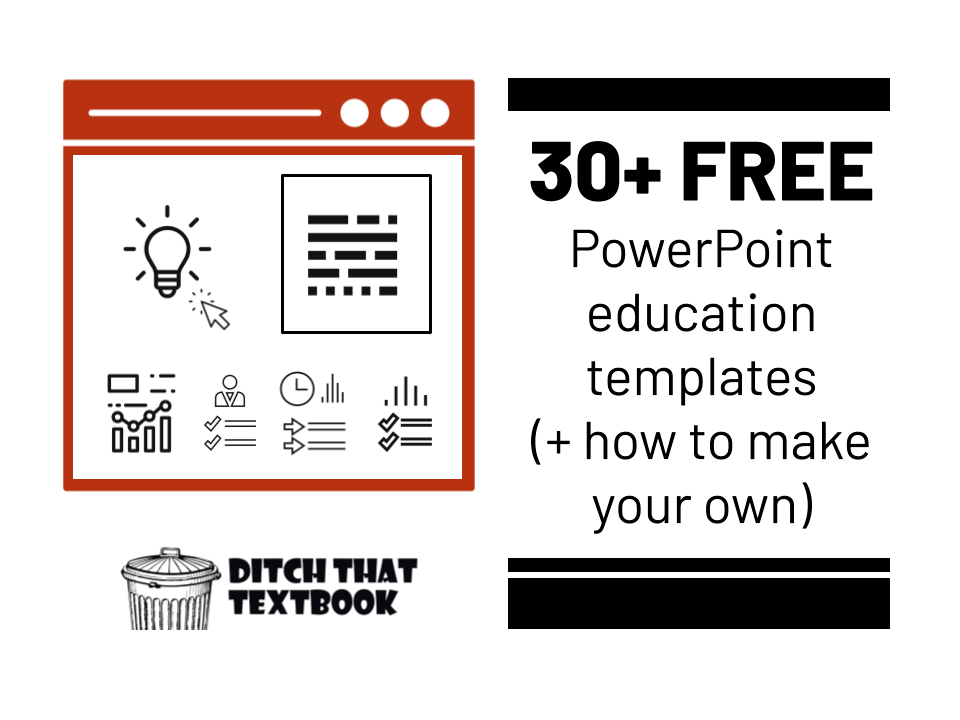
PowerPoint education templates create meaningful interactive activities for students. Find free templates and how to make your own.
Templates are productivity boosters. They can help us get more done in less time.
They're also great lesson design frameworks. They help us craft a path for students to take their thinking -- or for them to guide their creating.
And once a template is created, we can always go back to it again the next year -- or even the next week!
I love making student templates in slide presentation tools like PowerPoint. Making PowerPoint education templates offers us lots of benefits:
- Flexibility in design
- Blending images, text, lines, shapes, videos and more
- Incorporating drag and drop options (more on that later)
- An easy place for students to type
- An easy place for us to leave feedback (in comments)
Ready to use PowerPoint education templates in your classroom? Jump straight to the section you need using the Quick Navigation below or just keep scrolling!
FREE PowerPoint education templates to download
Some people like to make these templates and sell them on Teachers Pay Teachers. Not me. I like to make them FREE to download so you can start using them with your students right away!
Below, you'll find a wide variety of PowerPoint education templates. Students can work on these whether they're using the PowerPoint desktop app or working in PowerPoint Online. Here's what you need to do to use them:
1. Click the link to download a template.
2. Share it with your students.
- If you're using Microsoft Teams, attach it to an assignment and choose "Students edit their own copy" in the three dots to the right. Many learning other management systems (Canvas, Schoology, etc.) have similar options.
- If you don't have Teams or another LMS, click the "Share" button and get a link to your template to share with your students. They should open the file and go to File > Save a copy to make a copy of their own to work on.
3. Students work on the template, filling in text, adding images, moving things around ... whatever you have asked them to do.
4. Students turn the template back in to you to grade. In Teams or another LMS, they would do this through the assignment you gave them. Without Teams or an LMS, you can have students email it or share it with you.
Tips for using templates:
Zoom out to 50 percent (or, sometimes, even 33 percent). Many of these templates have items in the space around the PowerPoint slide. This will let you see everything. You might use the zoom slider in the bottom right corner of PowerPoint (see below).
To use something around the outside of the PowerPoint slide, duplicate it before putting it on the slide. Use the Ctrl+D keyboard shortcut (Mac: Cmd+D). This leaves the original item to be used again.
If you find someone's template in Google Slides, you can easily convert it over to PowerPoint. Just open the Google Slides template. Go to File > Download as > PowerPoint .pptx.
Here are DOZENS of templates ready for you to download and use:
Snapchat "This or That"
A Snapchat game that asks users to choose between two options. In this game, students drag an outline on their choice and then describe why they made that choice in the text box at the bottom.
Snapchat "Would You Rather"
The classic “choose between two options” game. Students snap a selfie with their camera with them pointing up or down to their answer.
Snapchat "My Face When"
A Snapchat game where students snap a picture showing a certain emotion — without knowing what that emotion describes. After they place their picture on the slide, they’ll reveal what their picture is actually describing.
Instagram Stories
The classic “choose between two options” game. Students snap a selfie with their camera with them pointing up or down to their answer.
TikTok
Let’s use an app that millions of students already have access to — Google Slides — to recreate the experience instead of using the app. Use the TikTok-inspired Google Slides template below to get your students creating!
Tweet for Someone
What would happen if a character in a story you’re reading tweeted about an event in the story? Now, you can let students create those tweets with Google Slides.
Interactive Notebook
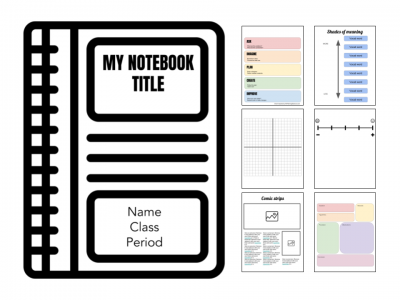
There are TONS of awesome multimedia activities you can do with interactive notebooks. They’re easy and free! Get this downloadable template to get started!
Sticky Notes
Some unfiltered brainstorming can help the ideas to flow. Sticky note brainstorming with Google Slides can help!
Great Big Icon Board
This "icon board" -- aka infographics template -- makes creating infographics fast and easy. Copy over icons along the side. Add a little text. Your students will be able to complete infographics in no time.
Treasure Map Icon Board
The Treasure Map Icon Board is a fun pirate-themed board. Add icons and text along the dashed line to show sequence as you follow the map.
Art Gallery Icon Board
The Art Gallery Icon Board is a simple board with four picture frames to group similar ideas. Use this for sorting, categorizing, etc.
Math Icon Board
The Math Icon Board is a simple board, created by Kimberly Wassmuth and shared on her blog, with icons to show thinking in math and science classes
Teacher Life Family Feud
Games can make class and professional development more fun! Here is a template to create a Family Feud-style. It's set up for a professional development game but can be repurposed any way for your students.
Millionaire Template
PowerPoint can be used to create lots of different games. Try editing this one to create your own Who Wants to Be a Millionaire game.
One Story, Many Endings
Critical thinking abounds when students come up with new endings to a story they've read.
Blackout Poetry
Take an existing text (page from book, online article). Black out words and lines until a few carefully selected words are left, leaving behind beautiful poetry.
Graphic organizers
Vocab Concept Map
Lets students make connections to other words from a specific vocabulary term.
Think About Thinking
Helps students think through their decisions and what they concluded.
Vocabulary Cluster
Lets students identify synonyms, antonyms and related words.
Cornell Notetaking
Lets students list main points and evidence, details and location.
Fishbone Planner
Lets students list the advantages and disadvantages of a topic.
Cause/Effect Chain
Lets students identify actions that caused other actions and their effects.
Evaluation Chart
Identify criteria, explain whether it was successful and why, and provide evidence.
KWL Chart
Lets students list: what I know, what I want to know, what I have learned.
BONUS: SlidesMania templates (+ lessons for each!)
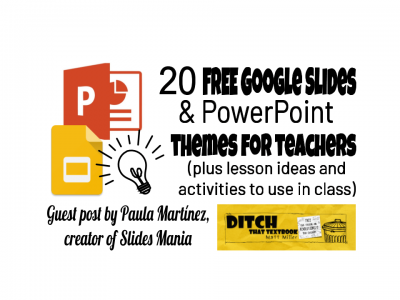
Slides Mania has more than 150 PowerPoint "themes" (aka templates) that you can download and use.
In this post, we pick our top 20 Slides Mania themes and suggest an activity you can do with each.
How to make your own templates with PowerPoint
Finding pre- created templates is great! You can use them as-is or even adjust them to fit your needs.
But what if you can't find a pre-created template that's just right?
Maybe it's time to make one.
Creating your own PowerPoint templates might be easier than you think. With a couple of tips and tricks, you can make effective PowerPoint education templates that can engage your students, help them think, and let them practice.
My favorite way: Create a one-slide PowerPoint presentation. The slide acts like a sheet of paper. I have more design flexibility making my templates in PowerPoint than I do in Word.
Step 1: Plan out your template
Dream up what your template will look like. What do you want students to do? What's the goal: guide them through thinking, give them repetitions with content, let them create with what they know?
There's no shame in borrowing ideas. Look around at other activities (i.e. all of the PowerPoint education templates above) to get inspiration. Then, use the ideas that work best for you.
There are LOTS of actions you can have your students do on templates, including:
- typing text
- taking photos and adding them to the template
- dragging arrows or shapes on an image or text
- removing a box to display something that's hidden behind it
- adding comments to the template for conversation or metacognition
It doesn't hurt to draw a quick sketch on paper of what your template will look like. For me, I like to start creating my template in PowerPoint and adjust it as I go.
EXAMPLE: I want to create a template where students consider the different elements of a story. To get them to think critically about them, I want them to pick the three most important parts of a story to them personally. Then, I want them to describe why they're important to them. Here's how I envision it:
They'll pick the three elements of the story that matter most to them. They'll drag the icon into the box. Then, they'll describe why it's important in a text box.
Once you have an idea for your template, create a new PowerPoint presentation to get started.
Step 2: Create the parts students won't edit.
When you use a traditional photocopied worksheet, the parts on the photocopy are locked into place. Students can't erase them. But they create the framework for the worksheet. What students write -- and where they write it -- has to do what's locked into place on that photocopy.
PowerPoint education templates are similar. We can lock certain parts of our templates into place so students don't accidentally move them around or change them.
(Remember, though ... we don't just want to recreate traditional worksheets. We're making something interactive and engaging that goes to the next level!)
EXAMPLE: In my story elements template, I want to create a title header, some instructions, and a place for them to put the most important elements of a story. So, I designed the template first with only the parts I don't want students to edit.
- I used icons from The Noun Project (thenounproject.com) for the books and the ribbons.
- The title and the instructions are simple text boxes.
- The line tool made the line under the title. I added rectangle shapes next to each of the ribbons.
- I added text boxes on top of the ribbons to add the numbers.
I will want to add parts to this template that the students can edit (i.e. text boxes, movable labels, etc.). But that comes later.
Step 3: Make those parts immovable by turning them into a background image.
Once I finish making the parts of the template that students won't edit, I want to lock them in the background so students can't accidentally move them. To do that ...
- Save the slide as an image file by going to File > Save as.
- Choose image from the dropdown menu below the file name. (I save my images as .png images.)
- Choose where you'd like to save the image and modify the file name if you wish.
- Click "Save".
- A dialog box will ask you if you want to save all of your slides as images or "just this one" (the one you have selected). I choose "just this one".
Now, you have an image file of the slide -- just the parts you don't want students to modify. Because it's an image, students can't move any of it around.
Next, go back to your slide and delete everything off the page. (I know, it seems strange! Trust me!)
Once it's clear, add your image file as the background of your slide. To do that:
- Right click and choose "Format background ..." from the menu box.
- In the sidebar, find "Picture source" and click the "Insert ..." button.
- Choose "From a file" in the dialog box.
- Find your file and click "Open".
Now, all of the parts of your template that you don't want students to move are locked in the background image of the PowerPoint slide. (Pretty slick, huh???)
Next, it's time to add the editable parts of your template -- the ones students will do and fill in.
Step 4: Add editable parts of your template.
We can add parts to our template that we want students to work with. This can include a text box for typing, moveable icons or text for them to drag, and even a space where they can add photos they take.
EXAMPLE: I want to add moveable images with the names of the story elements on them. After students choose their three favorite elements and move them into place, they type why they chose what they chose in text boxes below them.
SUPER EASY WAY: Instead of the image/text tiles I have above, just use text boxes. Have students drag the text boxes around.
A BIT FANCIER WAY: To make the tiles, there are lots of free image creation tools out there, including Canva, Adobe Express, Pic Collage, and more. If you want draggable tiles like I have, you can use one of those image creation tools. Make your tiles with images and text. (Again, my icons came from The Noun Project.) Then insert them as images for your students to drag around.
SUPER FANCY WAY: Another option for making those tiles (and the one I used in my example above): PowerPoint! In a new slide, I made all five of my image/text tiles. I used the same process as I did to make my background image (File > Save as > .png file). Then, I added my tiles image to the slide. Right-click the image and use the crop tool to cut the other tiles out. Then, insert the image again and do it again for the rest of the tiles.
In my example, after I had the five draggable elements of a story in place, I added text boxes for students to type their responses.
Other things you can add to your templates:
- Draggable arrows: Go to "Insert > Shape" and choose an arrow. Draw in an arrow for students to drag around. Double click it to add text to it!
- A space for a student photo: Go to "Insert > Shape" and choose a rectangle. Draw in a big rectangle where a student could insert an image. Students can use the camera app on their Windows device to take a picture. Then, they can insert the image from their camera roll onto the template.
- Justify response in the speaker notes: Students can tell you why they did what they did (chose what they chose, wrote what they wrote, etc.) in the speaker notes at the bottom. It's a great place to incorporate thinking about their thinking (i.e. metacognition)!
- Hyperlinks: Have students turn their templates interactive with hyperlinks! Any text, image, shape, line, etc. can become clickable by adding a link. Use the Ctrl+K keyboard shortcut.
- Comments: Comments can be added to any item on the template. They're like sticky notes where students can add extra thoughts.
Step 5: Share your template with your students.
If you're using Microsoft Teams, attach it to an assignment and choose "Students edit their own copy" in the three dots to the right. Many learning other management systems (Canvas, Schoology, etc.) have similar options.
If you don't have Teams or another LMS, click the "Share" button and get a link to your template to share with your students. They should open the file and go to File > Save a copy to make a copy of their own to work on.
Video: How to make your own draggable templates
The video below will walk you through how this whole process works. Note: It shows creation of the template using Google Slides. However, it's easy to cross this over to PowerPoint using the instructions in this post.
Video: How to make PowerPoint education templates
In this video, Holly Clark of The Infused Classroom and I talk about templates, how to make them, and how they can be used.
How have you used templates in your own class? What are your best tips and tricks? Share them in a comment below!



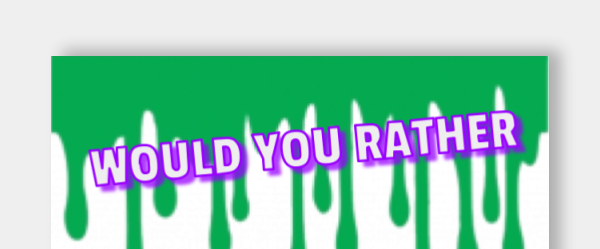
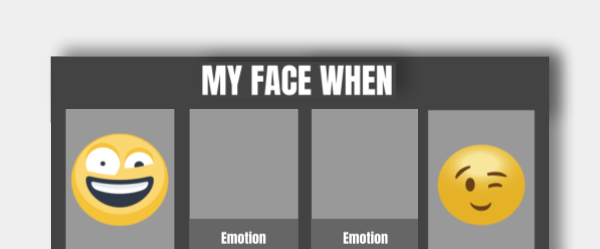

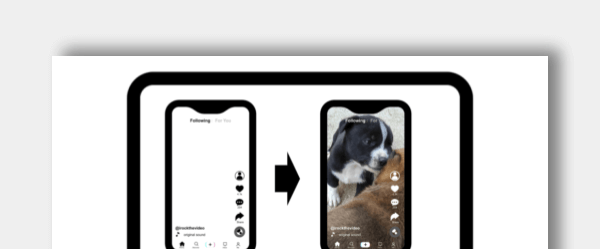
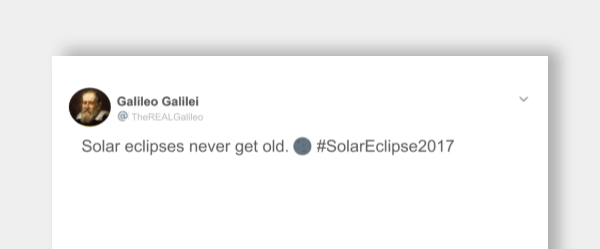
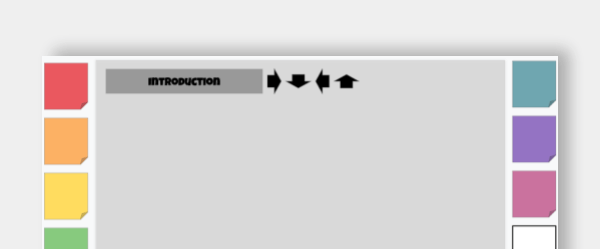
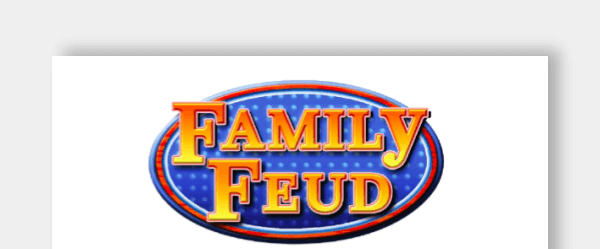



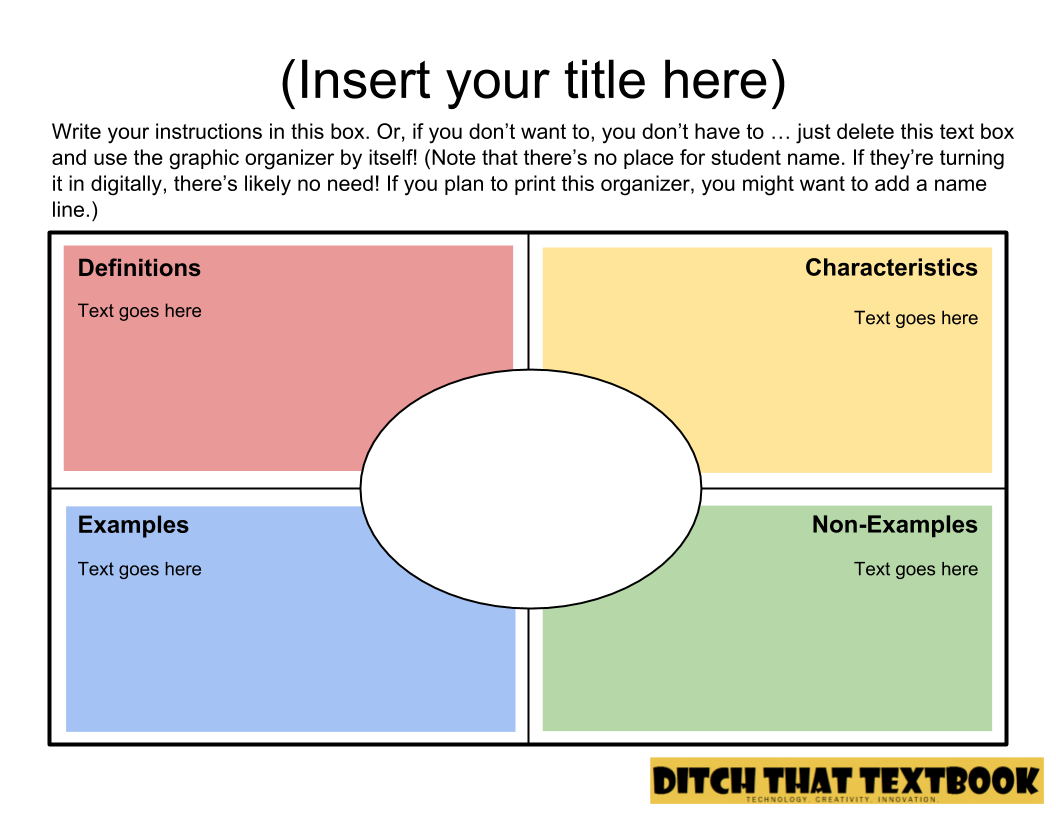



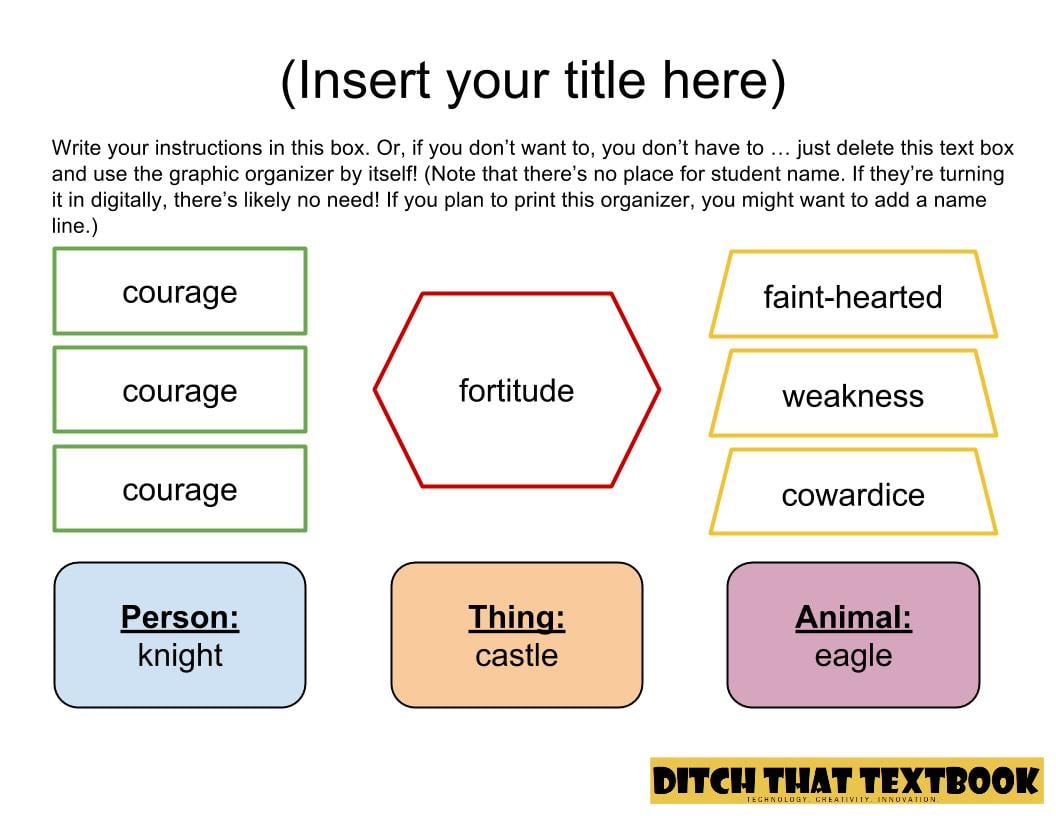

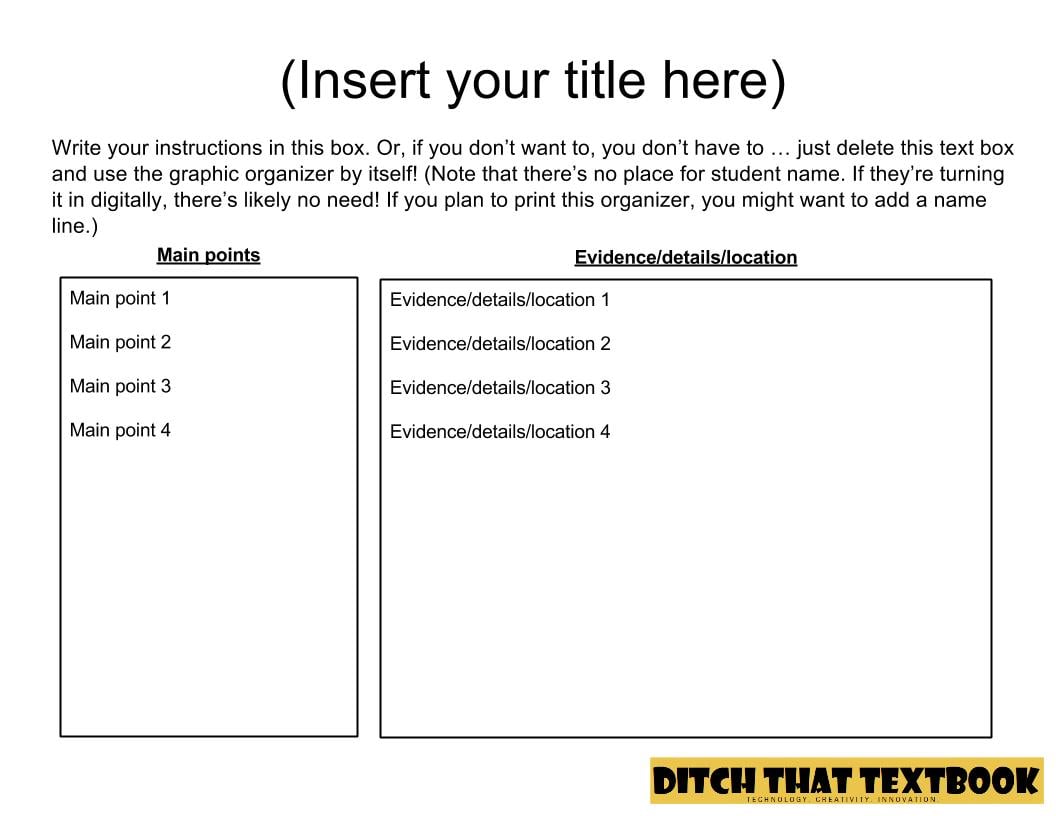

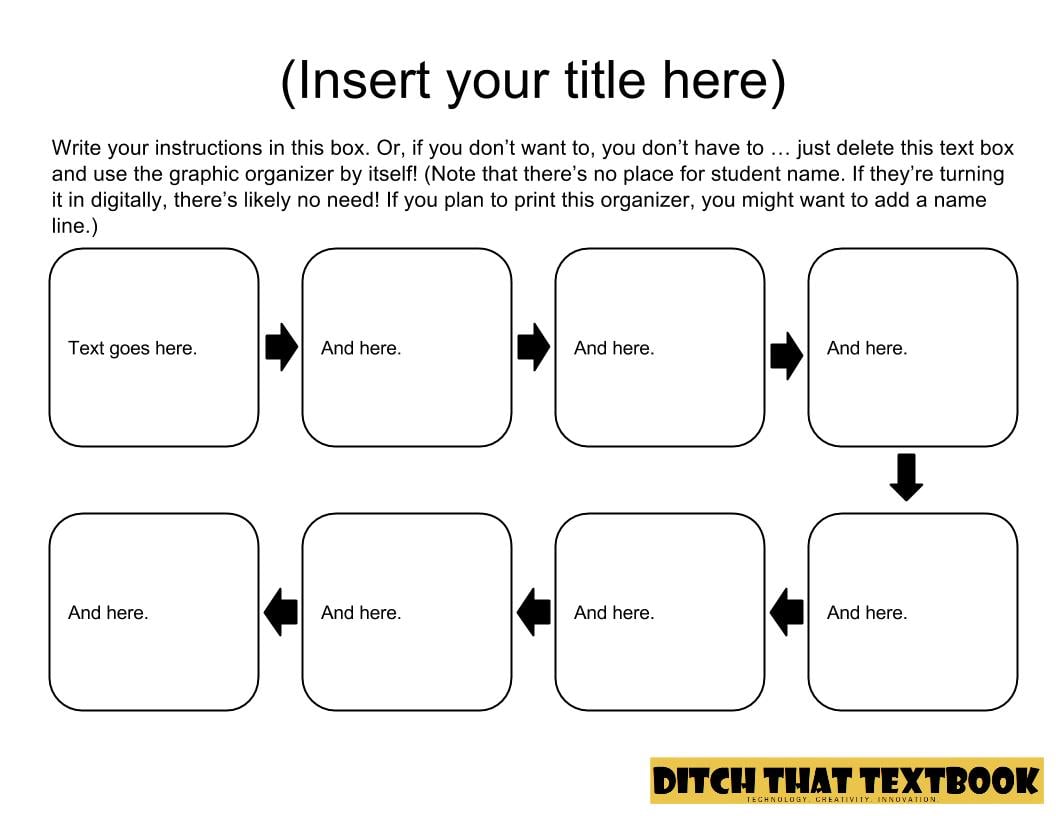
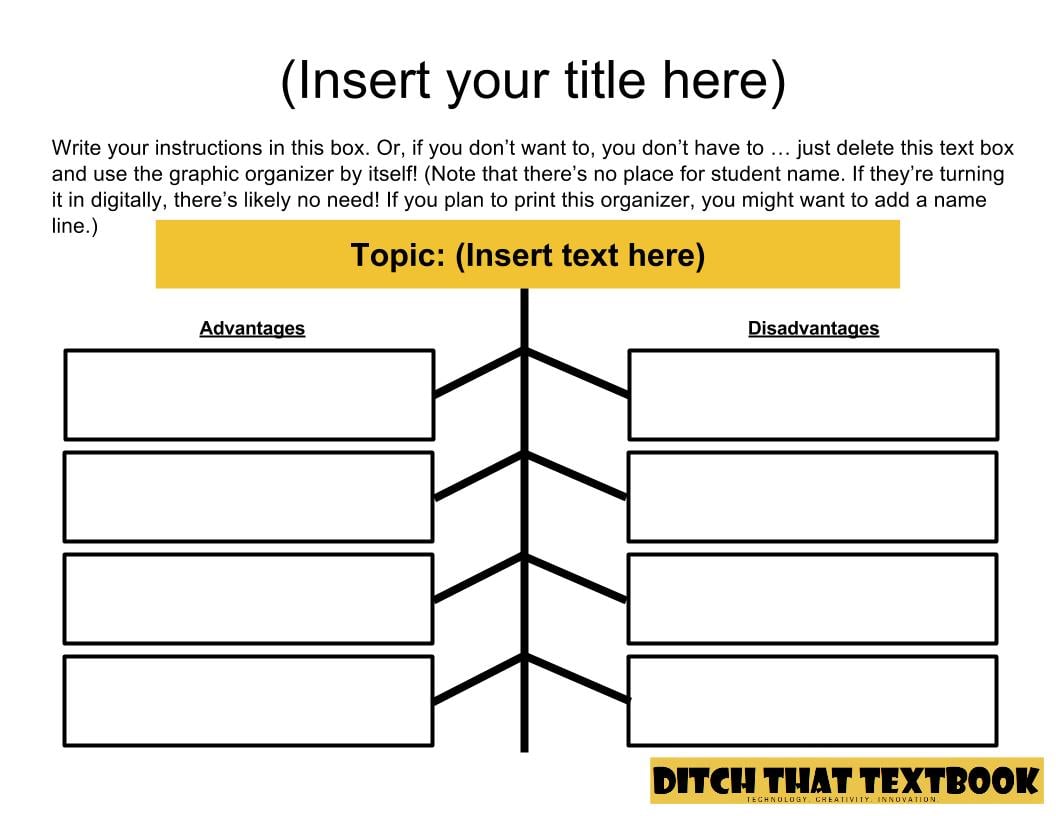
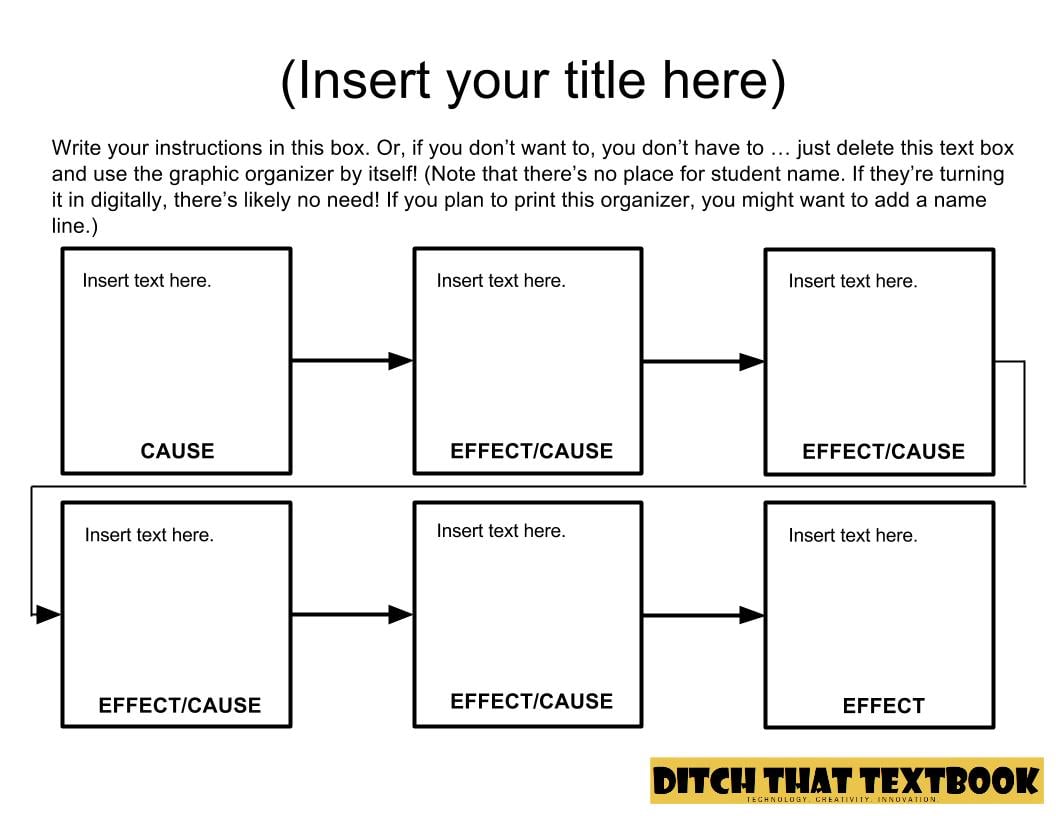


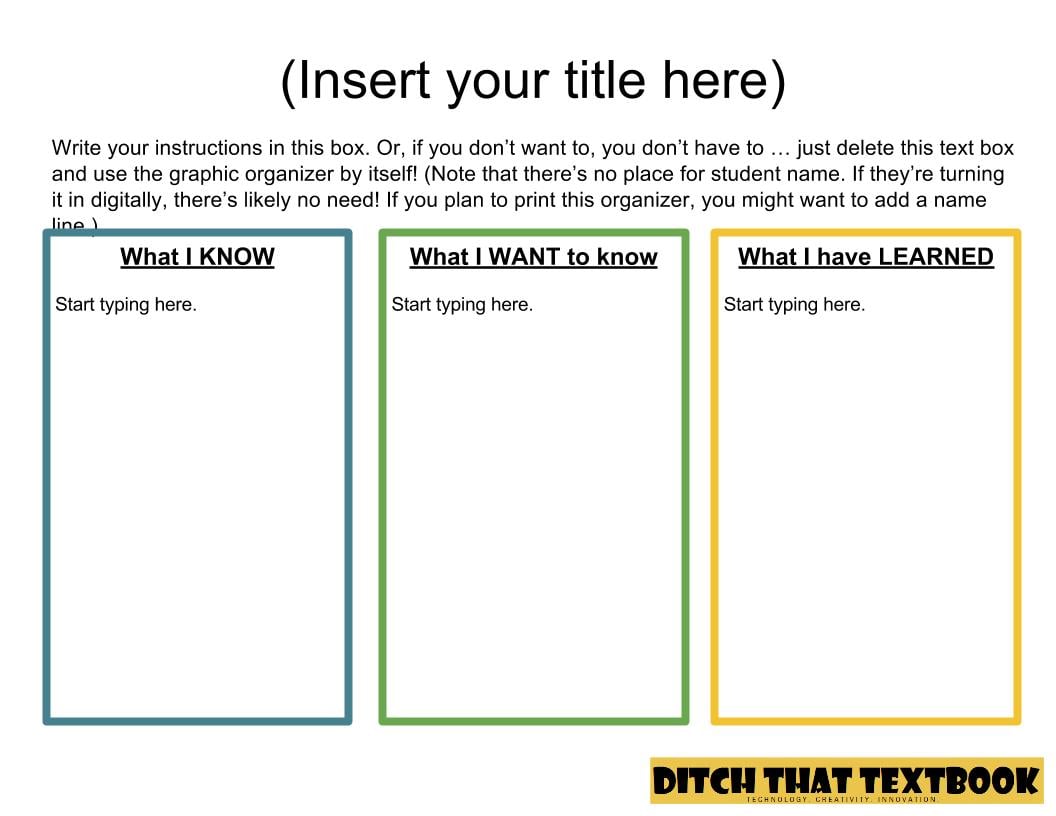
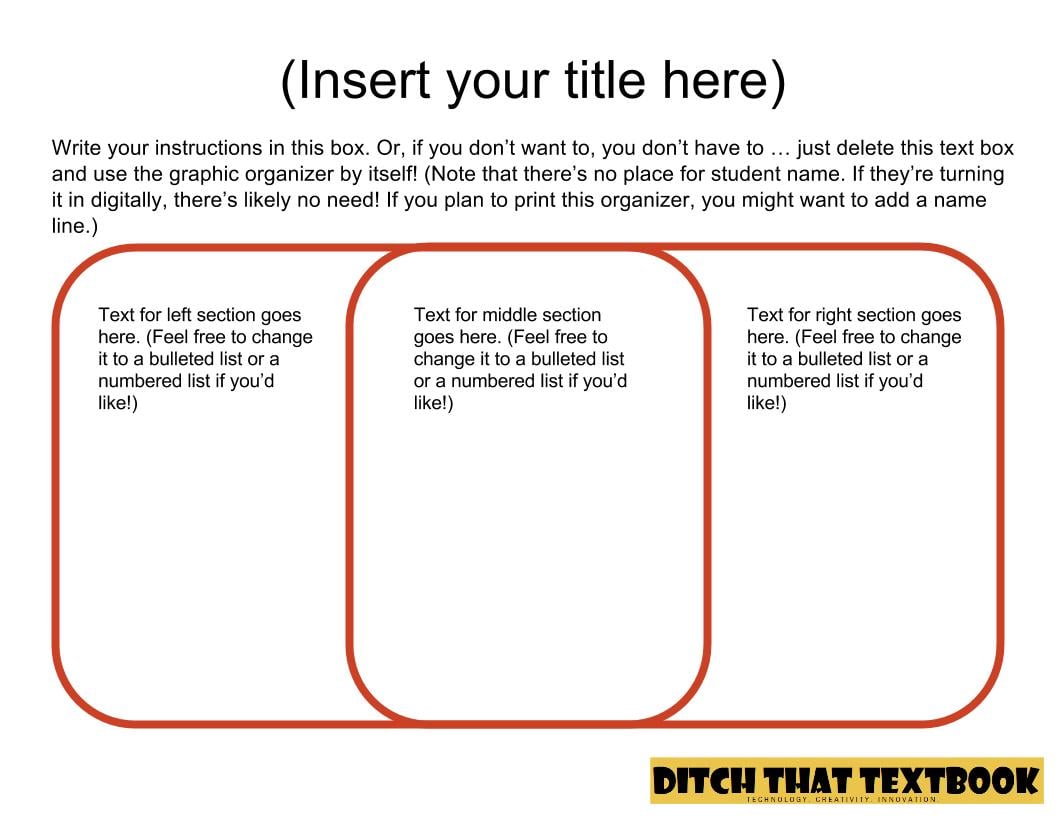

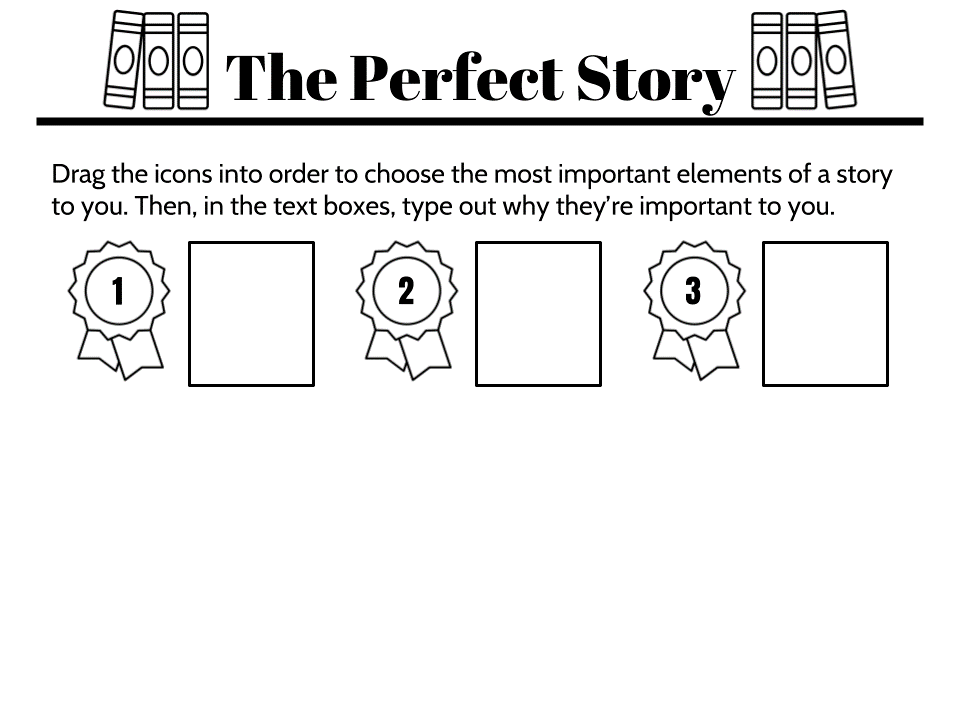


[…] 30+ FREE PowerPoint education templates + how to make them: PowerPoint education templates create meaningful interactive activities for stude […]
[…] 30 Free PowerPoint Education Templates […]
[…] 30+ FREE PowerPoint education templates + how to make them […]
[…] 30+ FREE PowerPoint education templates + how to make them […]
[…] Read the full story by Ditch That Textbook […]